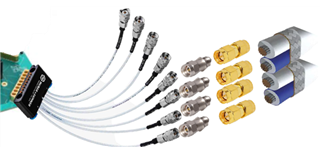Hello team,
in the DS250DF230EVM datasheet the HUBER+SUHNER MXP breakout cable assembly is recommended to be used for connecting signals. In my case I would like to connect some AWG26 signal wires directly to the J46 connector without the breakout wires.

With this I would like to avoid damping when using 4 interfaces (bridging the wires from SMA to SK, just to connect the HUBER+SUHNER MXP breakout harness afterwards for the J45 connector on the board).
Is there any option to use some connectors going straight to the single pins of the J46 and if, which one can be used for it?
Alternatively, I could connect the AWG26 wires directly to breakout harness by soldering/crimping. But I would like to avoid this option, as this would increase the damping again.
Thanks for your help and kind regards


